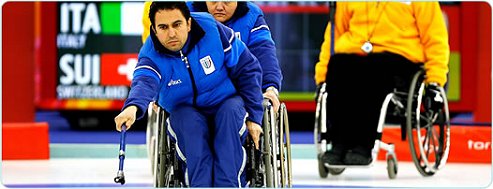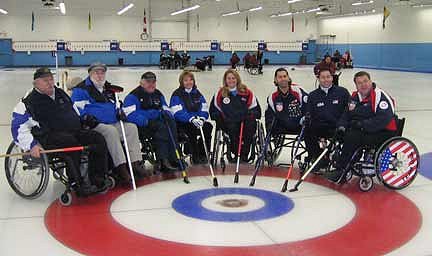
Wheelchair curling. Amazing Disabled Players Make it Look Easy.
“Nearly all men can stand adversity, but if you want to test a man's character, give him power.”
Abraham LincolnWheelchair curling is a sport for paraplegics. It is a sport that combines a lot of skill and it takes a ton of strategy to be a winner. Wheelchair curling is the only Paralympics sport that comprises teams made up of both men and women on the same team. The Torino Paralympic Winter Games saw the first entry to this sport.
The sport requires that the entrant must have a disability to the lower half of the body. You must require a wheelchair for mobility. Your disability could include double amputation, multiple sclerosis, a spine injury or cerebral palsy.
In this sport no brooms are used as in curling for the able bodied athletes.
So how does it work?
Wheelchair Curling works similar to shuffleboard in one way and bowling in another. The teams made up of both male and female athletes play against another team. The object of the game is to propel the 19.1 kilogram stone down to the other end of the ice where concentric rings are marked on the ice similar to a bulls-eye.
An end is similar to an inning in baseball or a period in hockey. The teams play six ends. Each person on each team will slide or throw, as it is called, two stones, 16 in total. The wheelchair must be stationary while doing so. The player can either use their hands or an extender cue that connects with the stone to push the stone to the circles.
At the end of each end, the team with the most stones closest to the center wins. At the conclusion of the six ends the scores are tallied and the team with the best record is declared the winner.
2nd Annual Cathy Kerr Memorial Bonspiel - December 2nd, 2006

Team Ottawa - Richard Fraser, Bruce Cameron (skip), Donny Stinson, Christine Lavalee; Team Utica: Danell Libby, Jim Joseph, Goose Perez, Jim Pierce (skip)
This is why it takes more skill to curl without sweeping. The person throwing the stone must calculate distance and the amount of curling the stone will turn. The stone glides on the surface of the ice because the ice has a surface that is similar to a pebbled effect. Skilled icemakers will set up the surface once the temperature of the ice is maintained at about 25 F or -5C.
The pebble effect is applied by an expert using water droplets. During the game the pebbles act upon the stone causing it to curl or turn. The pebbles slowly get knocked off as the game progresses thus changing the curling effect of the stone.
The ice surface is 146 feet long and approximately 16 feet wide. The 12 foot set of rings, called the house, are the target and the distance from the center, or button as it is called, to the backboard is 16 feet. There is a line drawn that is 37 feet from the backboard and that is called the hogline. Any stone that does not even touch the house is not counted.
Be sure to see Sledge Hockey as well as Paralympics Biathlon Skiing and Shooting.

A Rusty Drew Curling Cue
A gentleman named Rusty Drew passed away early in 2008. He was the inventor of the extender curlers cue. It is so named because it extends the playing career for those curlers who cannot handle the wheelchair curling stones by bending down. Disabled curlers use them while in the wheelchair. The stone is released by pulling back the cue at the last moment of the push.
Return from Wheelchair Curling to Whistler Outdoors



